Cacio e Pepe with Burrata is a creamy, cheesy indulgent pasta dish. It takes less than 20 minutes to make and is made with a few pantry ingredients like freshly cracked pepper, parmigiano-reggiano, pecorino, and pasta. It's a delicious last-minute pasta dish for a weeknight or date night at home!
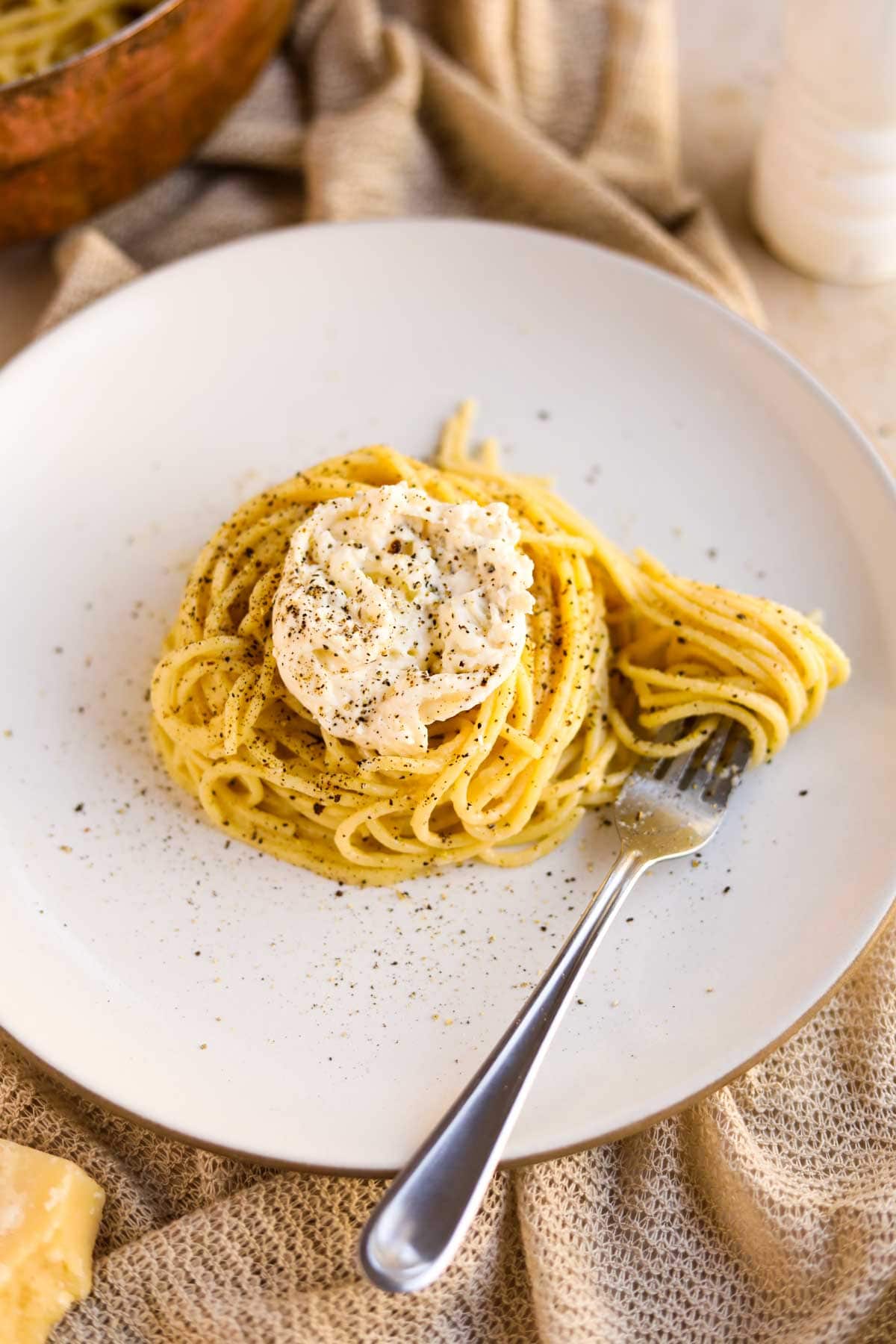
Cacio e Pepe with Burrata is a fool-proof pasta dish that requires a little technique, a handful of ingredients, and less than 20 minutes of your time. This is not the traditional way to make cacio e pepe, but it results is perfectly creamy pasta every time. Plus, who doesn't love to top their pasta with burrata?
Jump to:
What is Cacio e Pepe?
Cacio e pepe is a cheesy pasta dish from Rome. "Cacio e pepe" literally translates to "cheese and pepper" in various Italian dialects. The word "cacio" refers to cheese local to Italy, whereas, "formaggio" refers to cheese in general. Cacio e pepe is a simple pasta and cheese dish that is the elevated adult version of pastina al burro, a common cheesy pastina dish served to children.
Traditional Cacio e pepe is made without butter or olive oil. However, these two ingredients make it easier to make and prevent the grated cheese from clumping. It is also not traditionally topped with burrata; however, the burrata adds an extra level of decadence and creaminess to the dish. When in doubt, add more cheese!
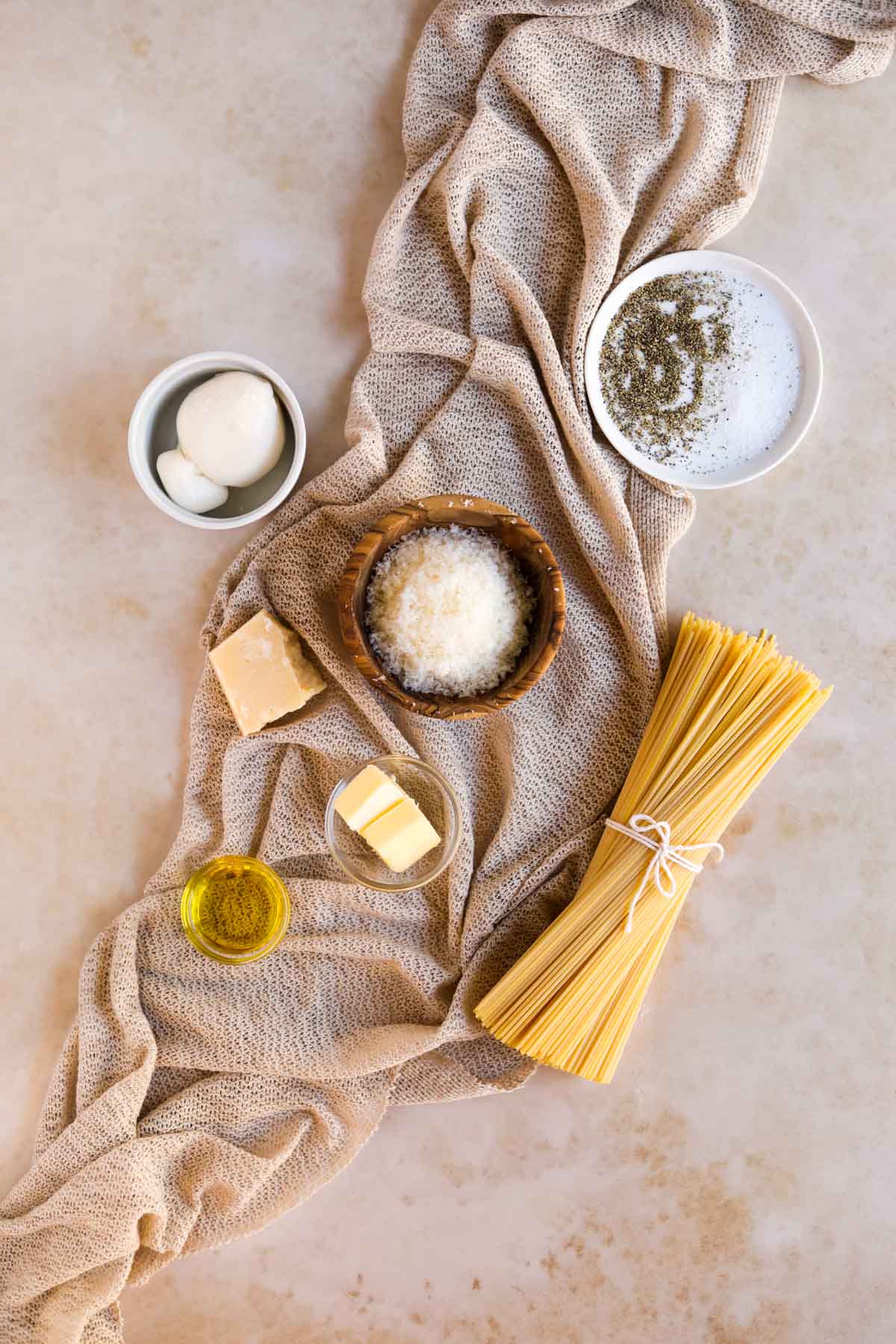
Cacio e Pepe Ingredients
- Pasta - Pasta is essential to cacio e pepe. It's best served with a thin, long noodle that can be coated in the cheesy sauce, such as spaghetti or bucatini.
- Parmigiano-Reggiano and Pecorino Romano - Parmigiano-Reggiano and Pecorino Romano cheese give cacio e pepe its signature sharp, rich flavor. The two cheeses are often used interchangeably but are made of two types of milk and have distinct flavors. Parmigiano-Reggiano is made of unpasteurised cow's milk and pecorino is a hard cheese made of sheep's milk, which gives it a uniquely sharp flavor. Cacio e pepe is only as delicious as the cheese you use. Do not use the cheese in the green can or it will clump.
- Freshly cracked black pepper - Black pepper adds the signature spice to the pasta.
- Pasta water - Pasta cooking water is an essential ingredient for cacio e pepe. The starchy pasta water creates a creamy sauce when mixed with the cheese, which is why traditional cacio e pepe does not require butter.
- Butter - While traditional cacio e pepe does not call for butter, it does make it easier to achieve the creaminess of a traditional cacio e pepe.
- Burrata - Burrata is not a traditional ingredient in cacio e pepe. However, it adds an extra creamy element and makes the pasta even more decadent and cheesy.
Substitutions
- Tonnarelli - Substitute this type of pasta for spaghetti if you prefer a thicker pasta. Tonnarelli, also known as spaghetti alla chitarra, is great because it has a rough and textured surface that holds onto sauces well.
- Bucatini - Instead of spaghetti, use bucatini pasta to make Bucatini Cacio e Pepe. Bucatini is a spaghetti-like noodle that has a hole in the center, which catches sauces well.
- Gluten-free spaghetti - Use a gluten free spaghetti if you are gluten intolerant. We only recommend Garofalo Gluten Free Spaghetti, which tastes like traditional wheat based pasta.
- Homemade pasta - Use homemade pasta from scratch instead of store bought spaghetti.
Variations
- Spicy - add more black pepper or chili pepper flakes while cooking to imbue heat into the dish
- Extra creamy - Add more Parmigiano-Reggiano and pecorino cheese to make the dish extra creamy.
- Garlic - If you want to add a hint of garlic, slice one clove in half and add it to the pan when you add the pasta water. Once the water simmers, remove the garlic from the pan and follow the remaining steps. This will add a hint of garlic flavor to the pasta water.
- Crispy prosciutto - Crispy prosciutto adds a delicious crunch.
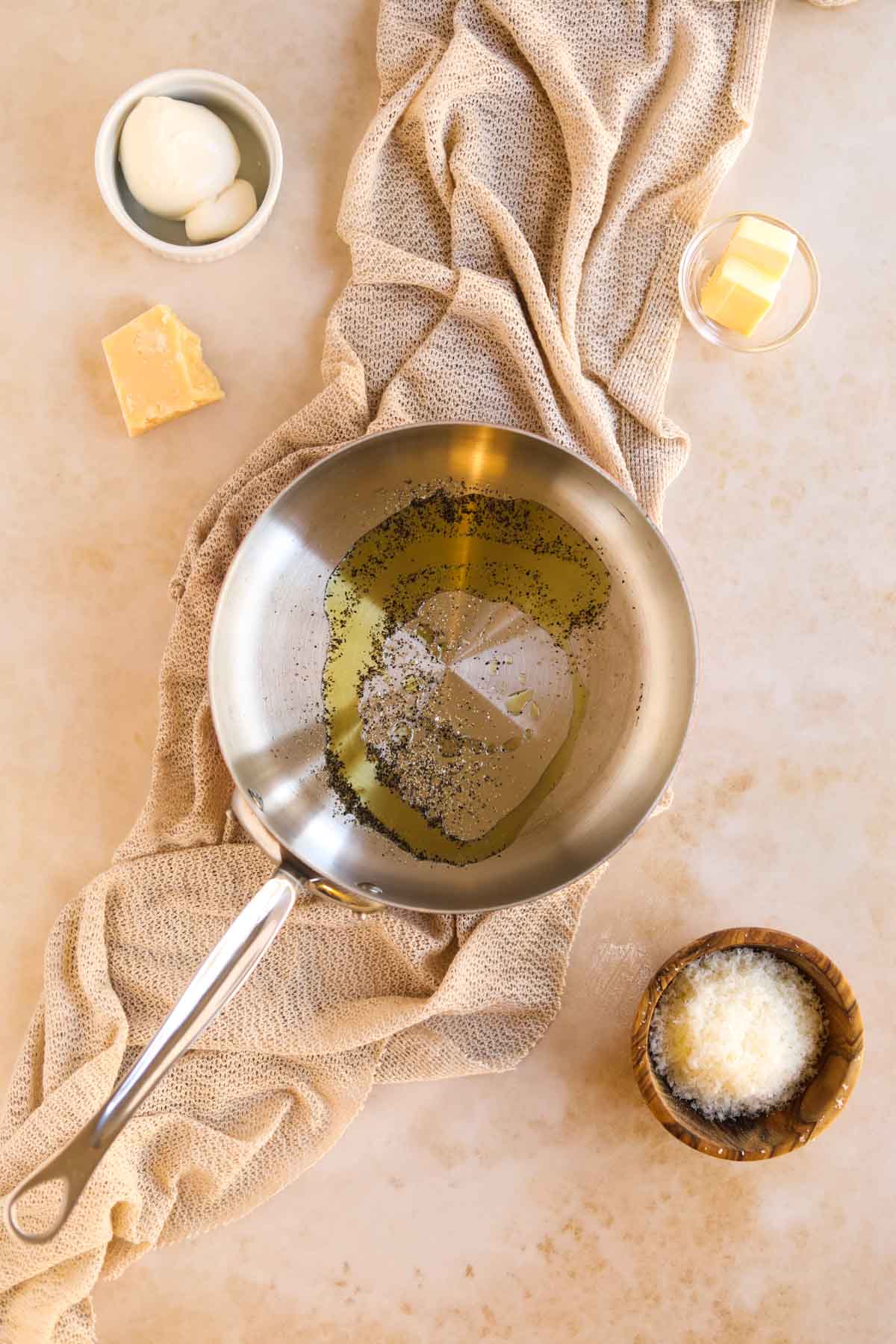
How to Make Cacio e Pepe
Cacio e pepe takes just a few easy steps that result in creamy, peppery pasta.
- Boil and salt water - First, in a 5 quart pot, bring 3 quarts of water to a boil and season with kosher salt. Keep the water shallow so it gets starchy from the pasta.
- Boil pasta - Add pasta and cook pasta for about 7 minutes, or about a minute before al dente or tender. Reserve 1 cup pasta water and drain the rest.
- Cook pepper - Heat olive oil on medium heat in a heavy skillet. Then mix in pepper and cook until toasted and fragrant, about 1 minute.
- Add pasta water and pasta - Then, add ½ cup of the reserved pasta water to the skillet. Once the water simmers, add spaghetti and swirl in the pasta pepper water with tongs.
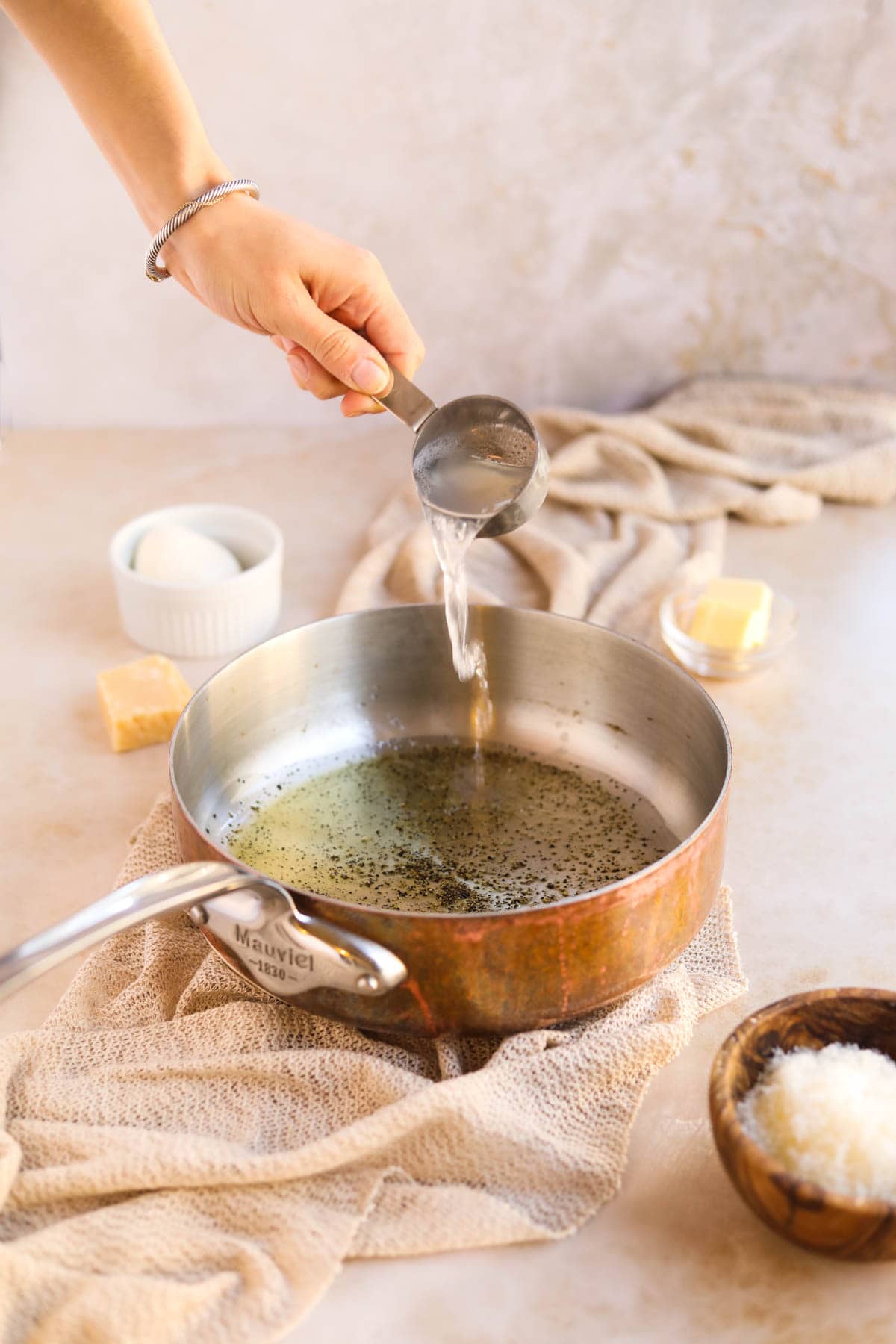
- Stir in butter and Parmigiano-reggiano - Reduce the heat to low and add in butter and Parmigiano-reggiano. Use tongs to stir in the butter and cheese in a circular motion to coat the noodles.
- Stir in pecorino - Remove the skillet from the heat and stir in the grated Pecorino Romano cheese. Use the tongs to toss the pasta and cheese until the cheese melts and the cheese coats the pasta. The noodles will be al dente and coated with sauce. If the pasta is dry, stir in more reserved pasta water one tablespoon at a time until it reaches a saucy consistency.
- Serve in bowls - Serve the pasta in bowls and scrape the bottom of the pan with a spoon to collect the starchy sauce. Top the pasta servings with the starchy sauce, burrata, and more black pepper to taste. Serve immediately.
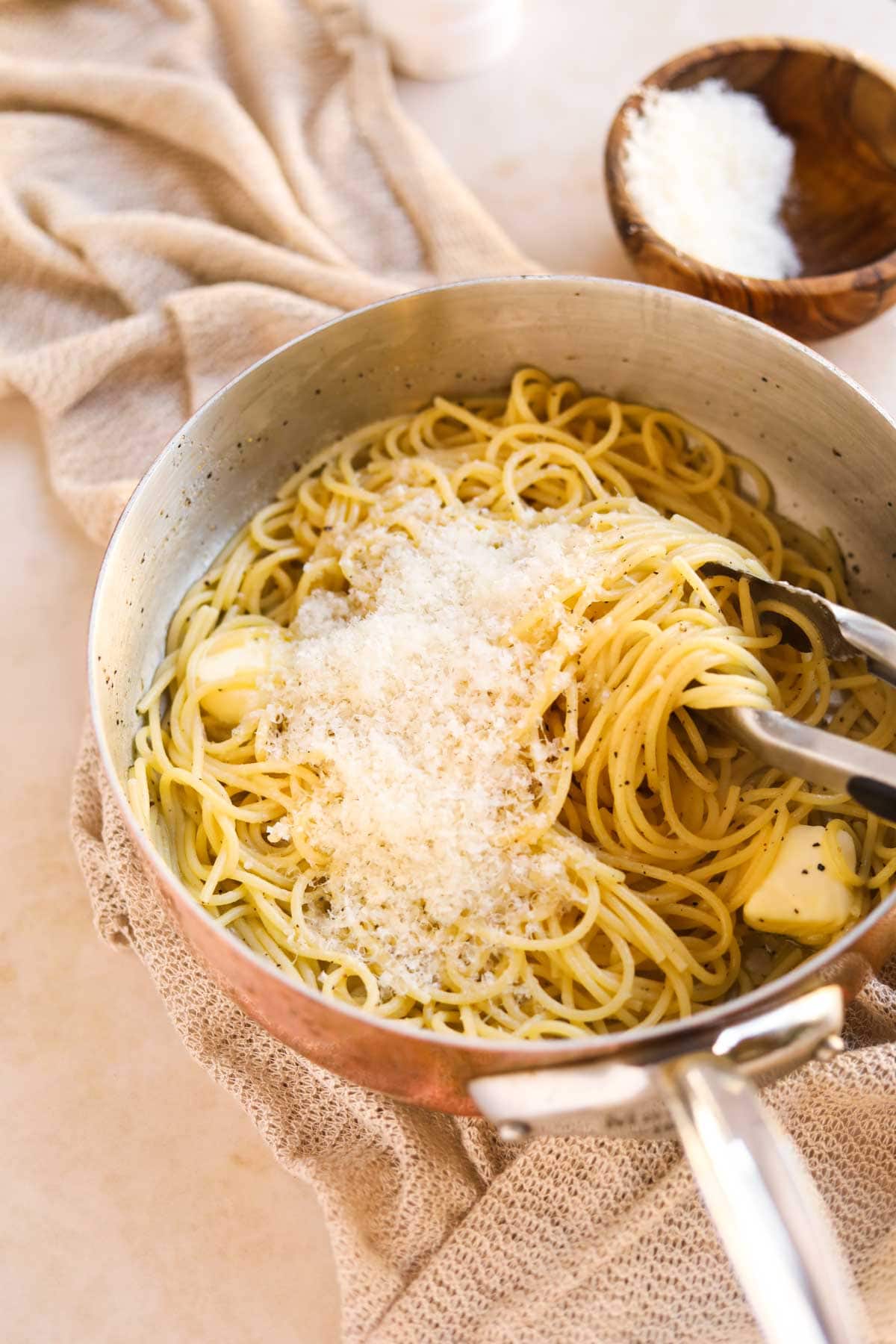
Can You Reheat Cacio e Pepe?
In the case of cacio e pepe, it's best fresh since the key characteristics of the dish is its al dente pasta noodles and creaminess from the starchy water. If left over night, the pasta will absorb the starchy water and no longer be al dente.
However, if you have leftovers, store them in an air-tight container and keep in the fridge up to one day. To reheat leftovers, heat a teaspoon of olive oil in a pan over medium heat. Add the leftover pasta and use tongs to gently separate the pasta in the pan to cook. Place a lid on top of the pan and allow it to reheat, about 2-3 minutes.
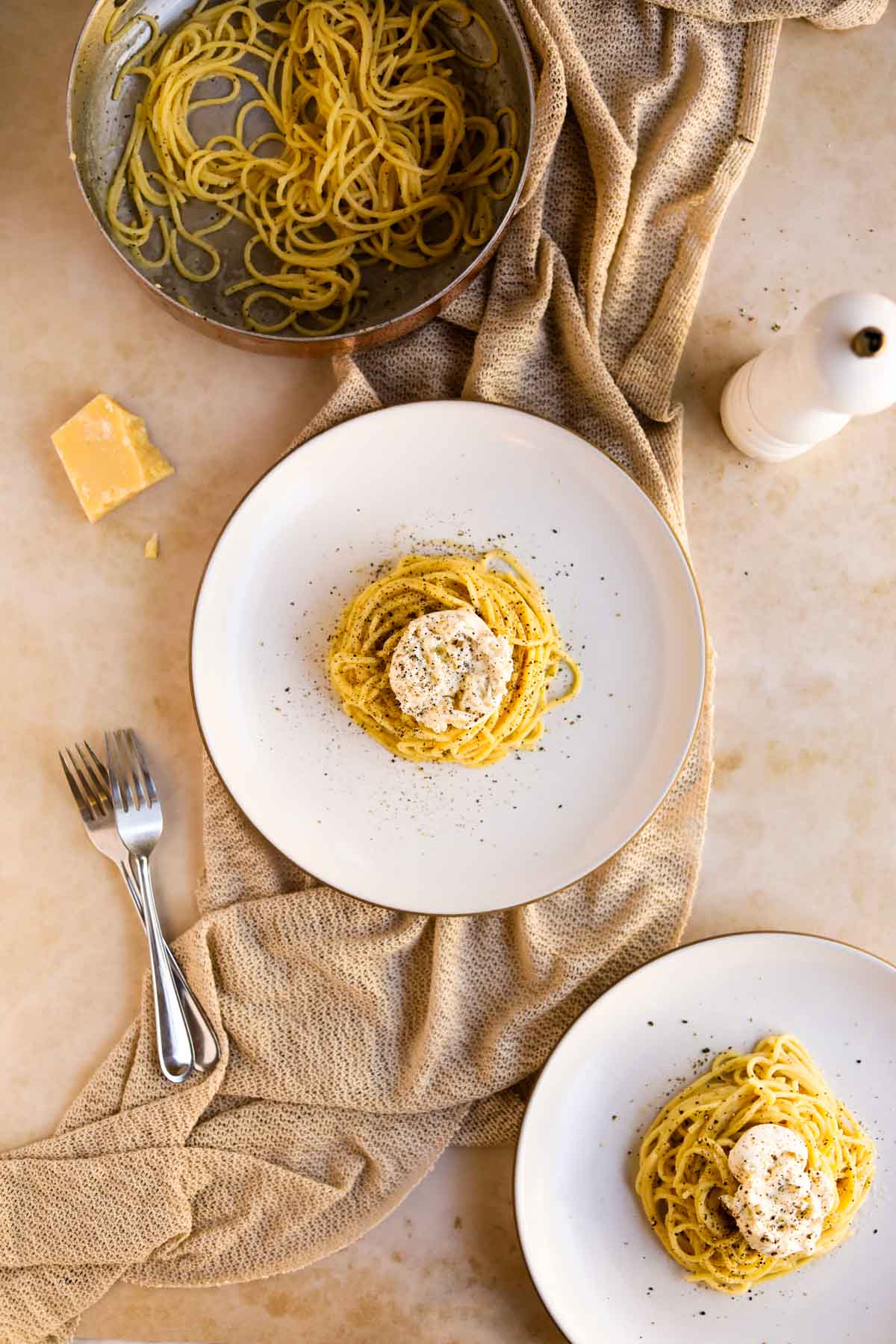
Other Types of Cacio e Pepe
Cacio e pepe is a simple pasta with signature peppery and sharp cheesy flavors. Some variations include:
Top Tip
Cacio e pepe is only as delicious as the ingredients you use. We recommend using authentic Parmigiano-Reggiano and Pecorino Romano, and not using parmesan cheese from the green can or it will clump.
Related Recipes
Did You Like This Recipe?
Love this creamy cacio e pepe recipe? Please leave a 5-star rating in the recipe card below & leave a comment below. Thanks!
Sign up for THP's newsletter and keep in touch on Instagram, Facebook, Pinterest, TikTok, and YouTube. If you make this recipe, tag #theheirloompantry so we can see your cacio e pepe!
Cacio e Pepe with Burrata
Equipment
Ingredients
- kosher salt
- 8 oz pasta bucatini or spaghetti
- 2 teaspoon freshly cracked black pepper plus more for serving
- 1 tablespoon olive oil
- 2 tablespoon unsalted butter cubed
- 1 cup grated Parmigiano-Reggiano or Grana Padano
- ¼ cup finely grated Pecorino
- 4 oz burrata cut in half
Instructions
- First, in a 5 quart pot, bring 3 quarts of water to a boil and season with kosher salt. Keep the water shallow so it gets starchy from the pasta.kosher salt
- Add pasta and cook for about 7 minutes, or about a minute before al dente or tender. Reserve 1 cup of pasta water and drain the rest.8 oz pasta
- Heat olive oil on medium heat in a heavy skillet. Then mix in pepper and cook until toasted and fragrant, about 1 minute.1 tablespoon olive oil, 2 teaspoon freshly cracked black pepper
- Then, add ½ cup of the reserved pasta water to the skillet. Once the water simmers, add spaghetti and swirl in the pasta pepper water with tongs.
- Reduce the heat to low and add in butter and parmigiano-reggiano. Use tongs to stir in the butter and cheese in a circular motion to coat the noodles.2 tablespoon unsalted butter, 1 cup grated Parmigiano-Reggiano or Grana Padano, 4 oz burrata, ¼ cup finely grated Pecorino
- Remove the skillet from the heat and stir in the pecorino Romano. Use the tongs to toss the pasta and cheese until the cheese melts and the pasta is coated with cheese. The pasta is done once the noodles are al dente and coated with sauce. If the pasta is dry, stir in more pasta water one tablespoon at a time until it reaches a saucy consistency.
- Serve the pasta in bowls and scrape the bottom of the pan with a spoon to collect the starchy sauce. Top the pasta servings with the starchy sauce, burrata, and more black pepper to taste. Serve immediately.
Notes
- Cacio e pepe is best enjoyed immediately. However, if you have leftovers, store them in an air-tight container and keep in the fridge up to one day. To reheat leftovers, heat a teaspoon of olive oil in a pan over low-medium heat. Add the leftover pasta and use tongs to gently separate the pasta in the pan to cook. Place a lid on top of the pan and allow it to reheat, about 2-3 minutes.
- Cacio e pepe is only as delicious as the ingredients you use. We recommend using authentic Parmigiano-Reggiano and Pecorino Romano, and not using parmesan cheese from the green can or it will clump.


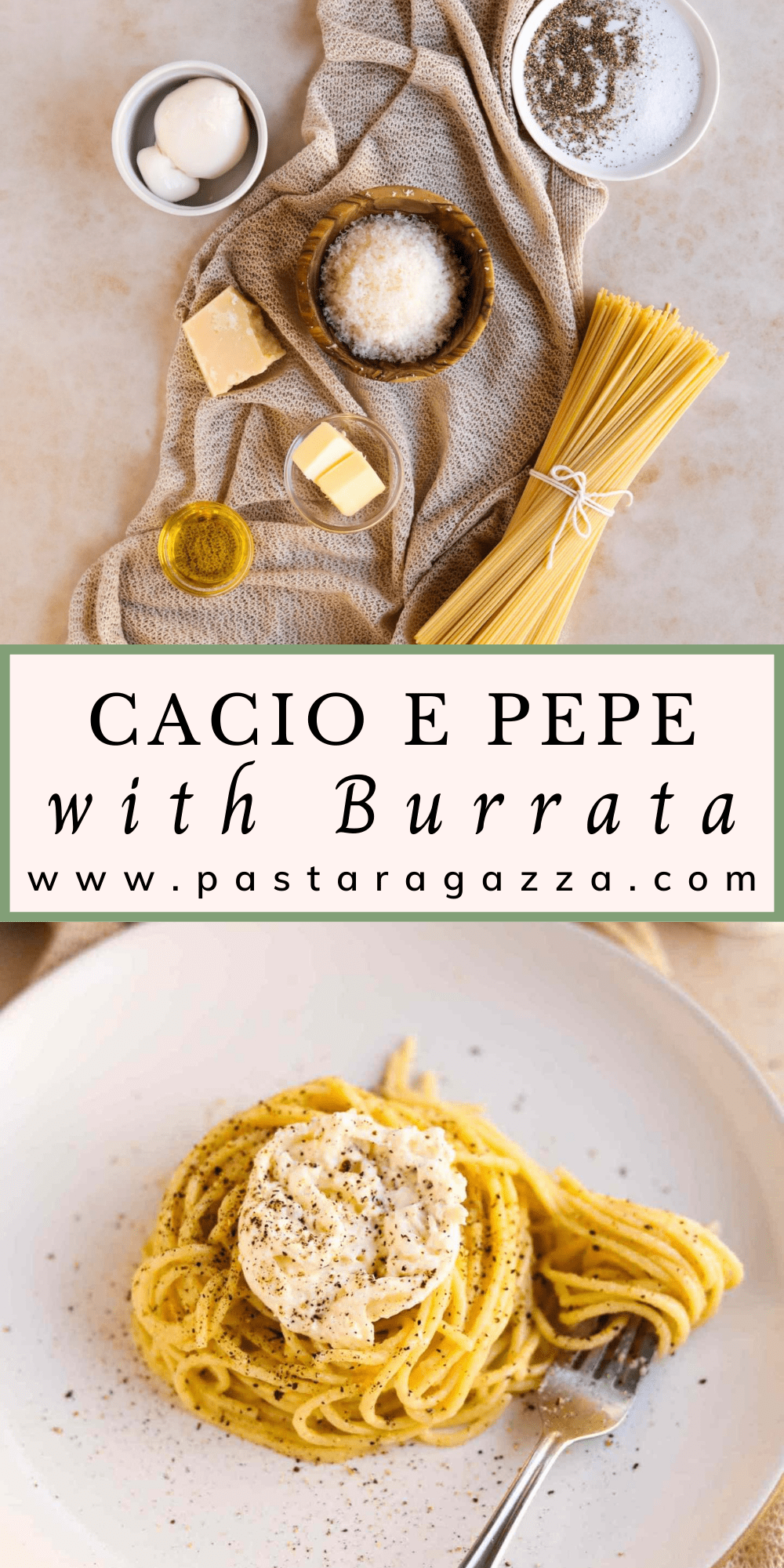
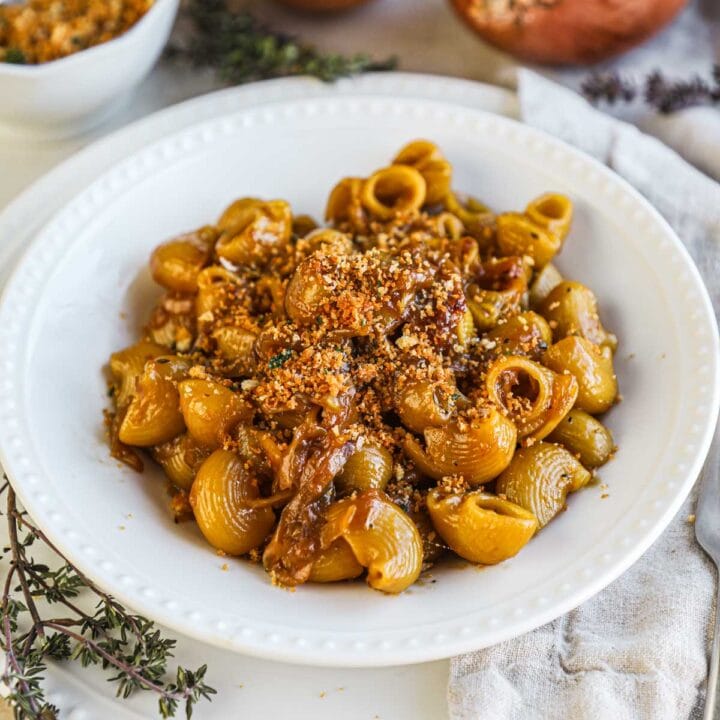
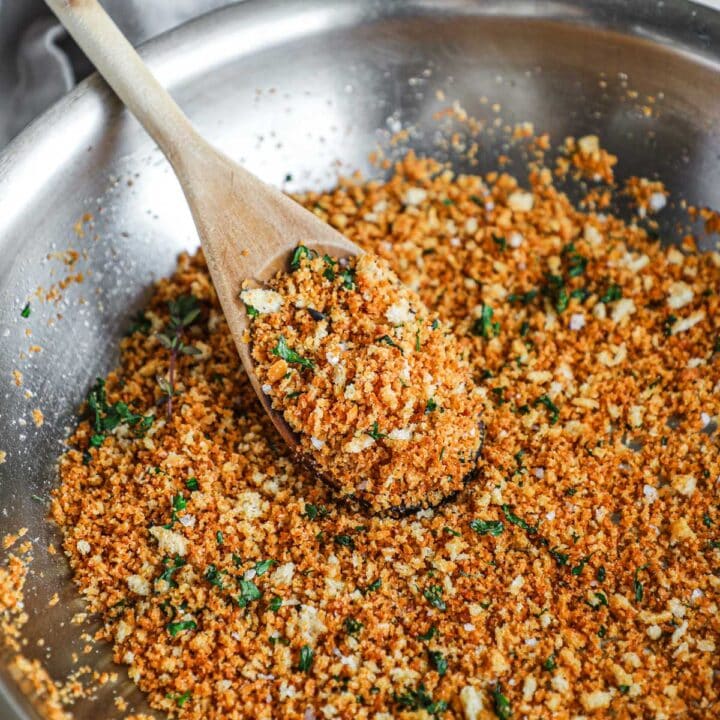
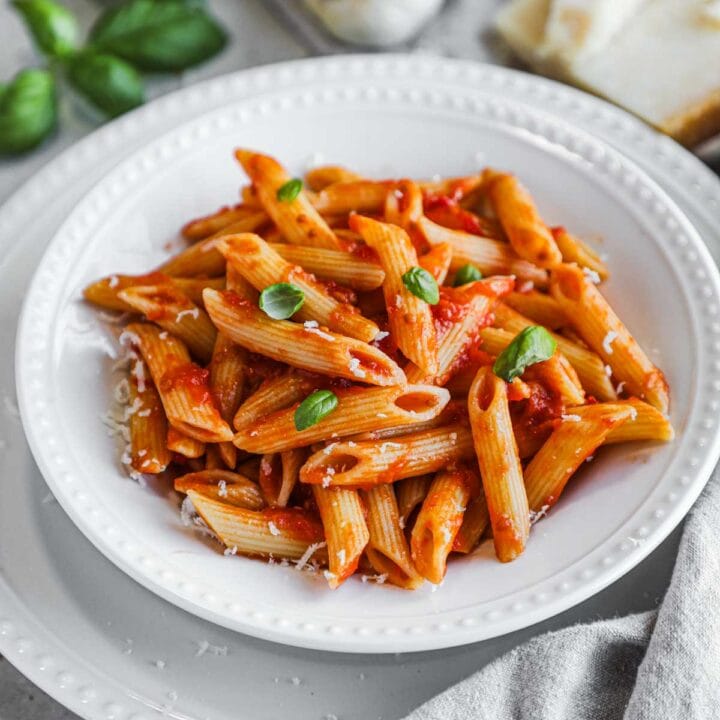
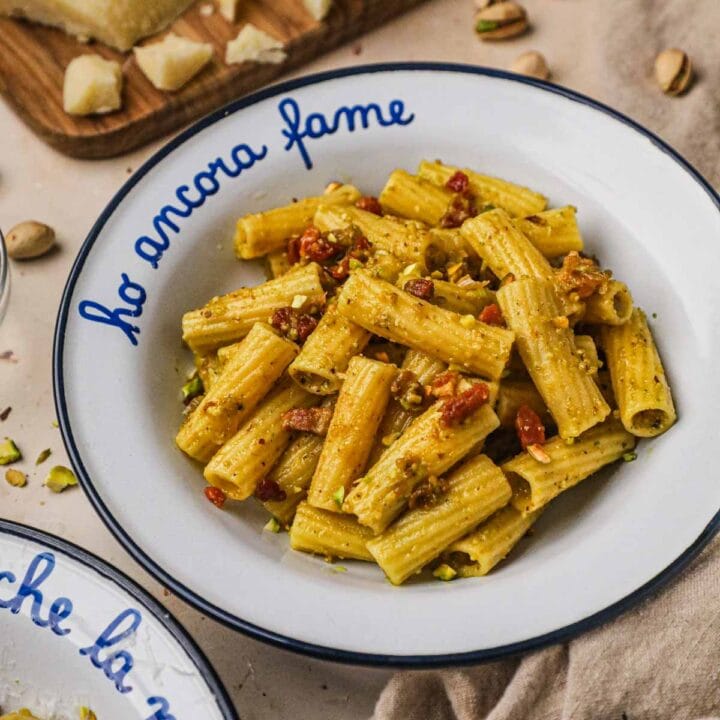
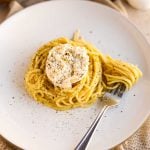
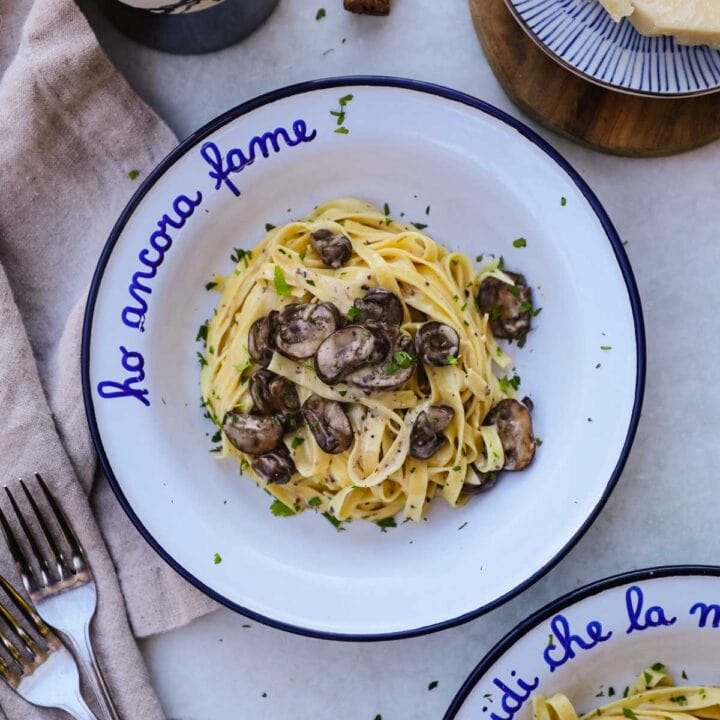
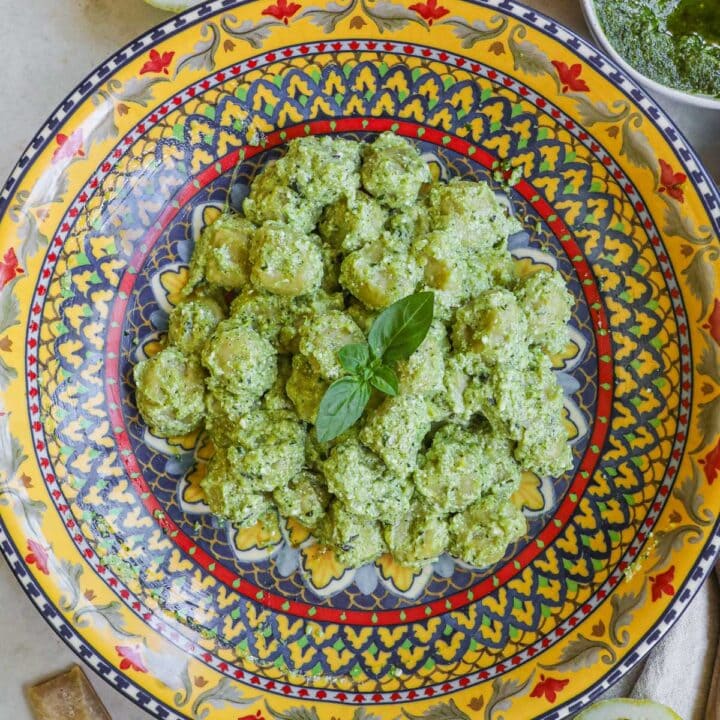
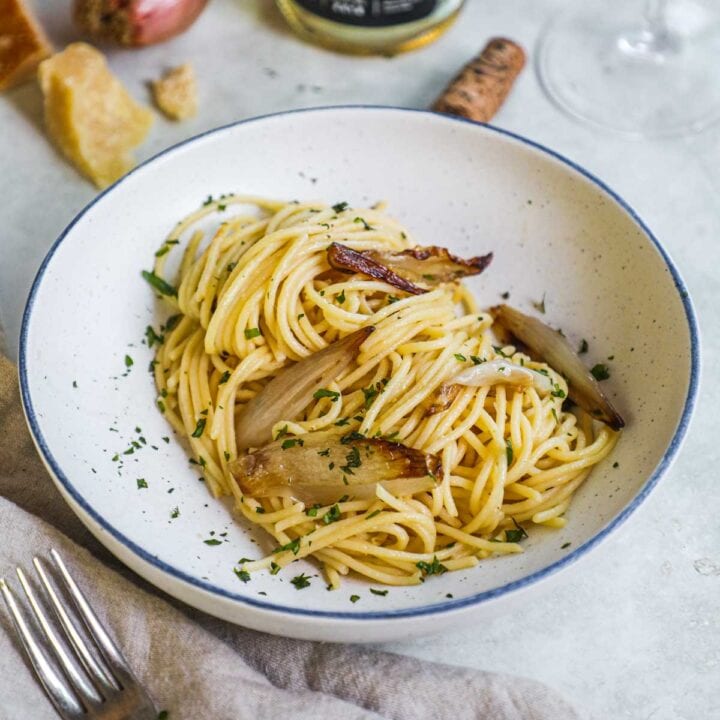
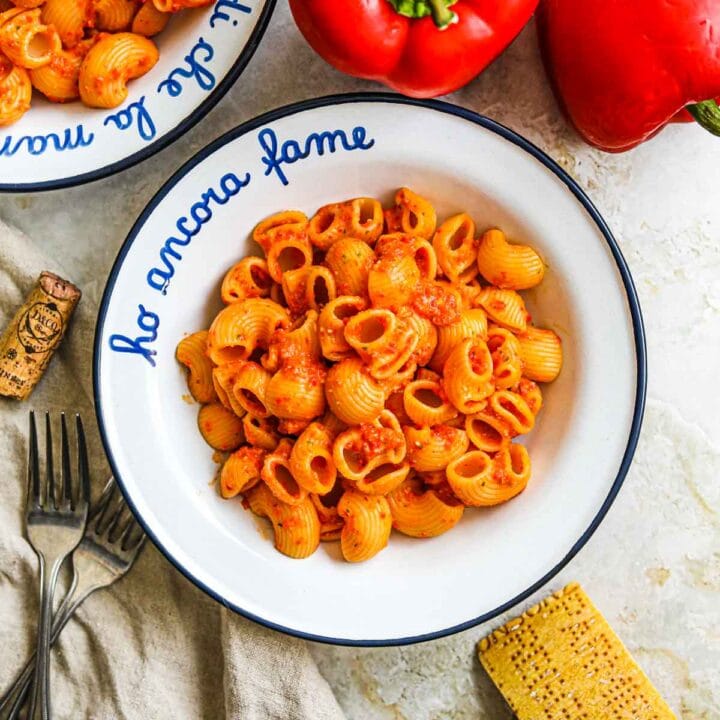
YR
Ok, so this is hands down one of the best pasta dishes I've EVER made, and I'm a total foodie. I followed the recipe precisely, for 4 servings. Could eat this every day.
A few tips
– I needed extra pasta water
– Ground fresh peppercorn in a spice grinder, which is faster than manually twisting the pepper mill
– Used a block of parm, easy to grate at room temp.
Kathleen Higashiyama
YR, you're making us blush! We're thrilled to hear you loved the recipe. Thank you for the thoughtful review and tips!
David
So yummy, better than the cacio e pepe I have had at restaurants.
Kathleen Higashiyama
I'm so glad you enjoy this cacio e pepe, David! I think the burrata adds a nice cheesy touch!